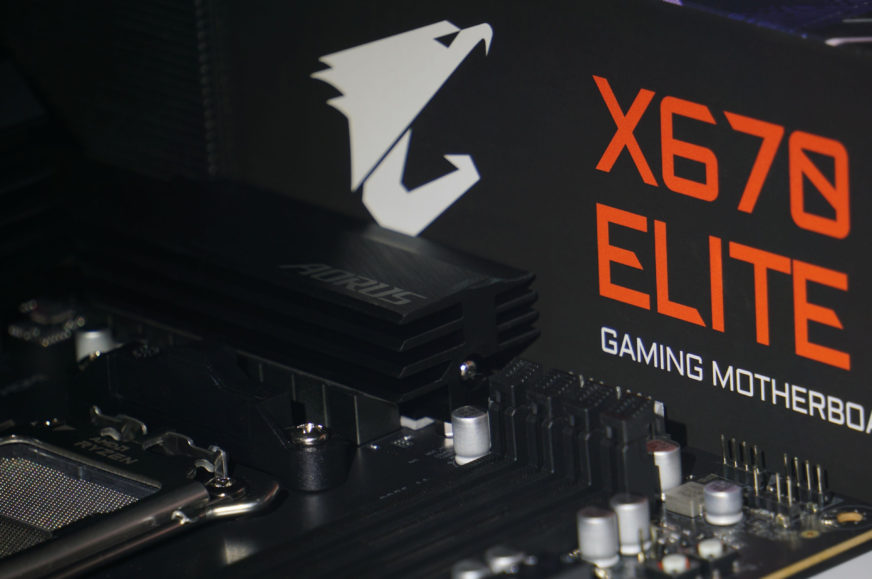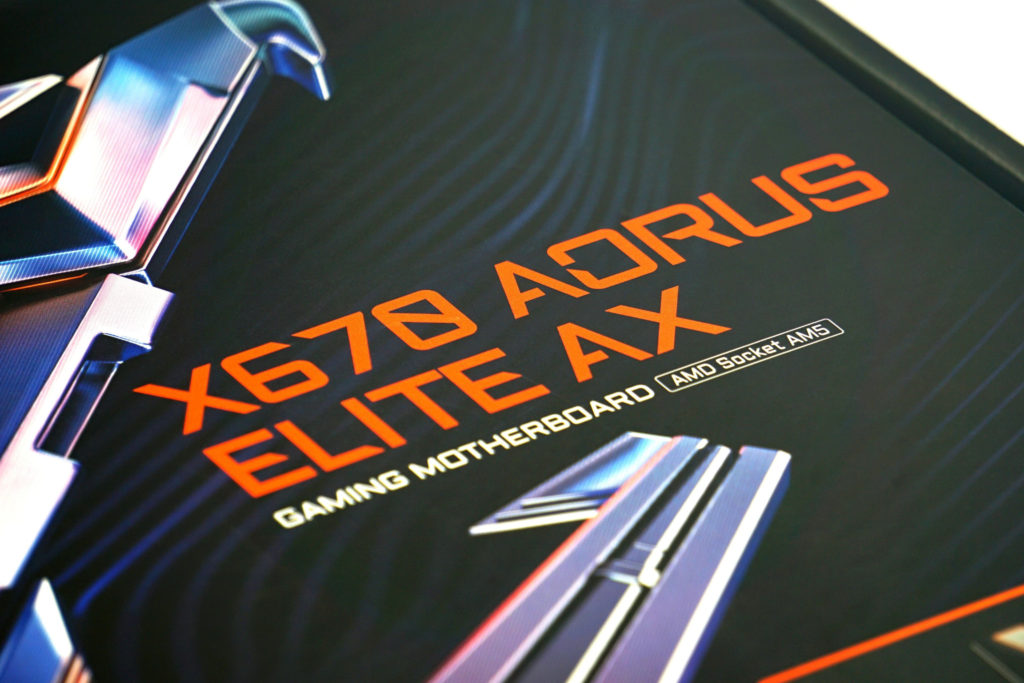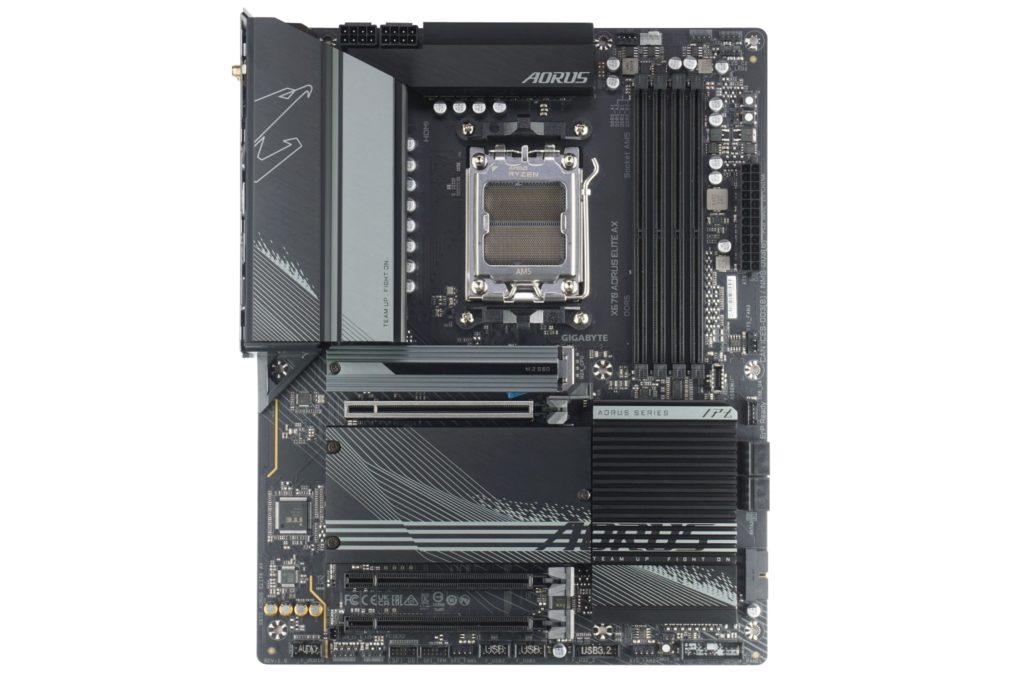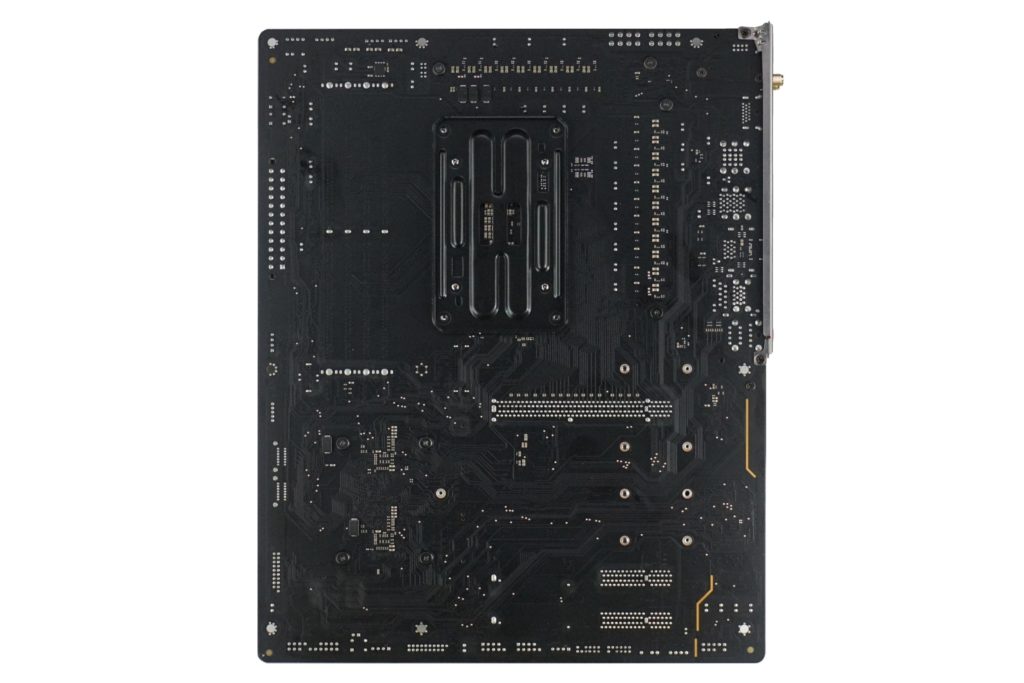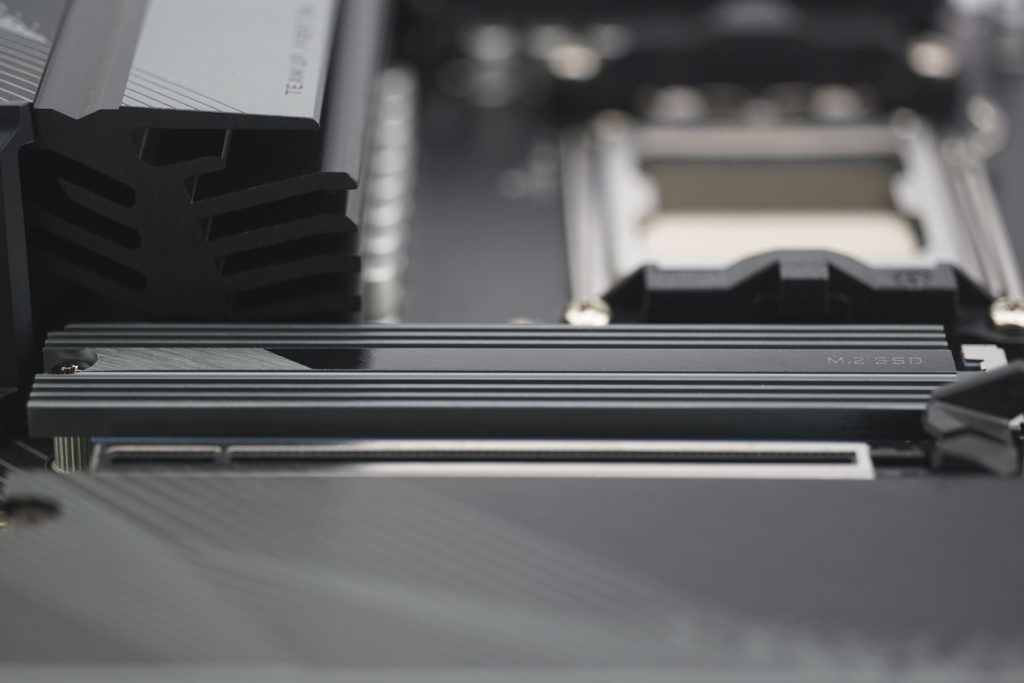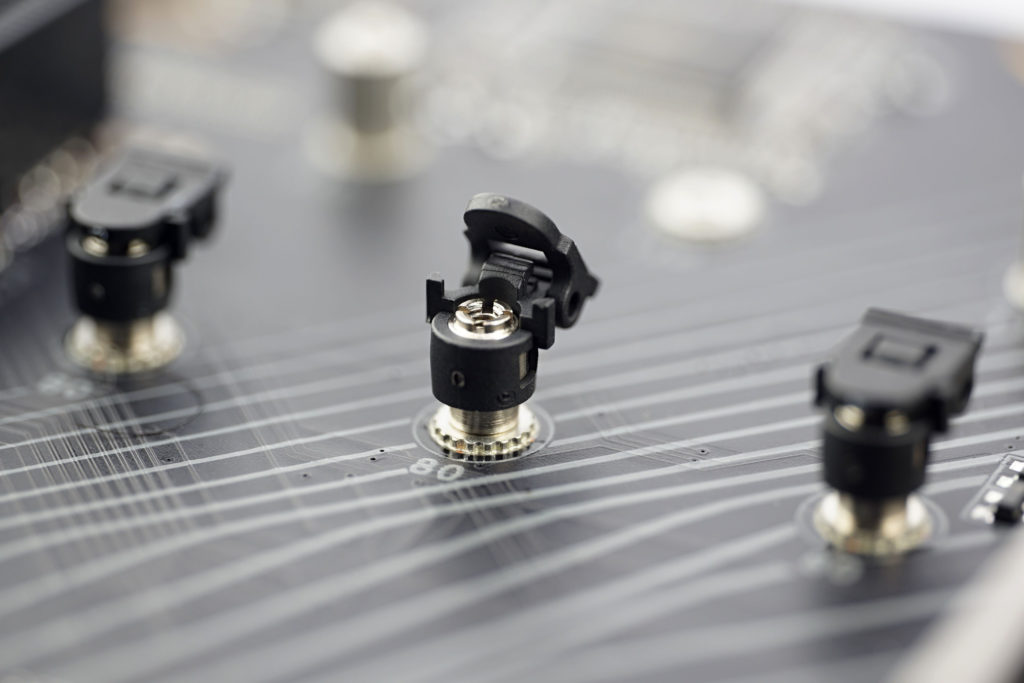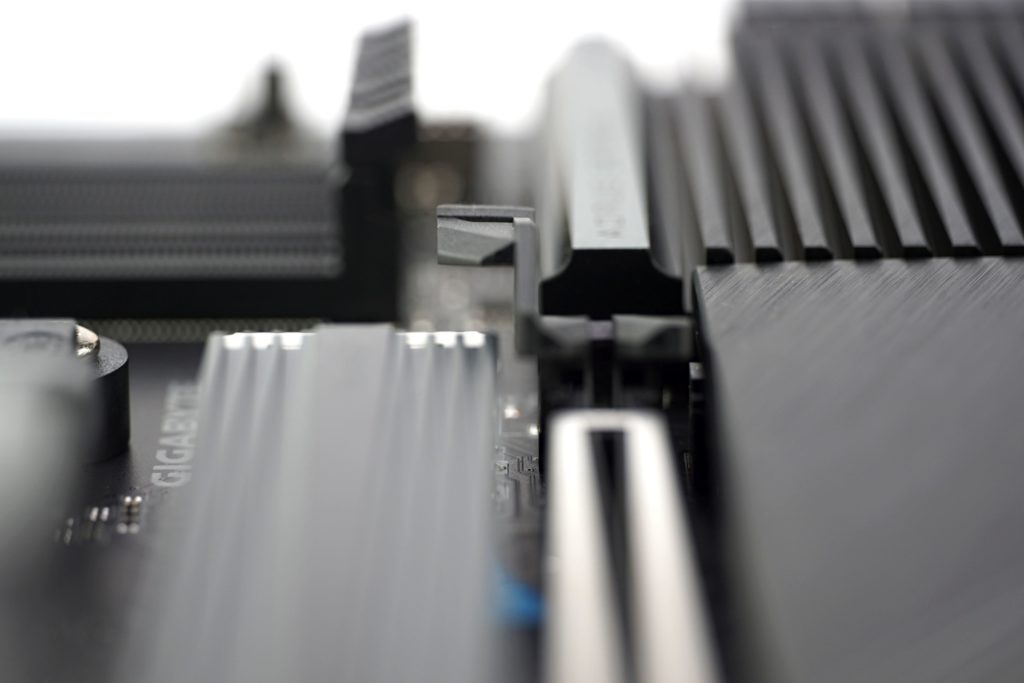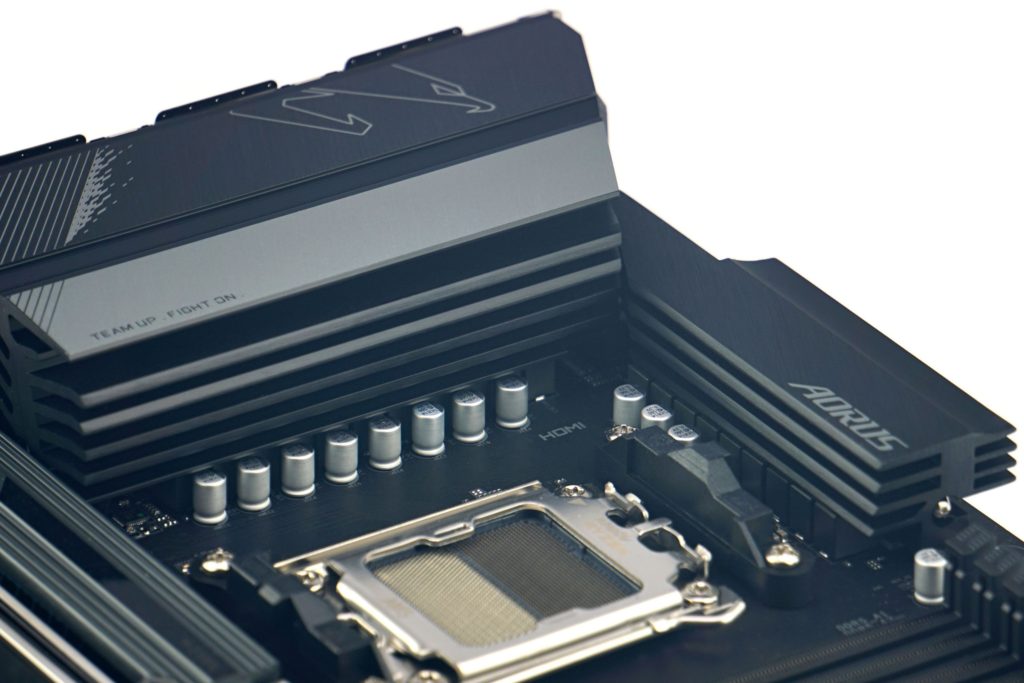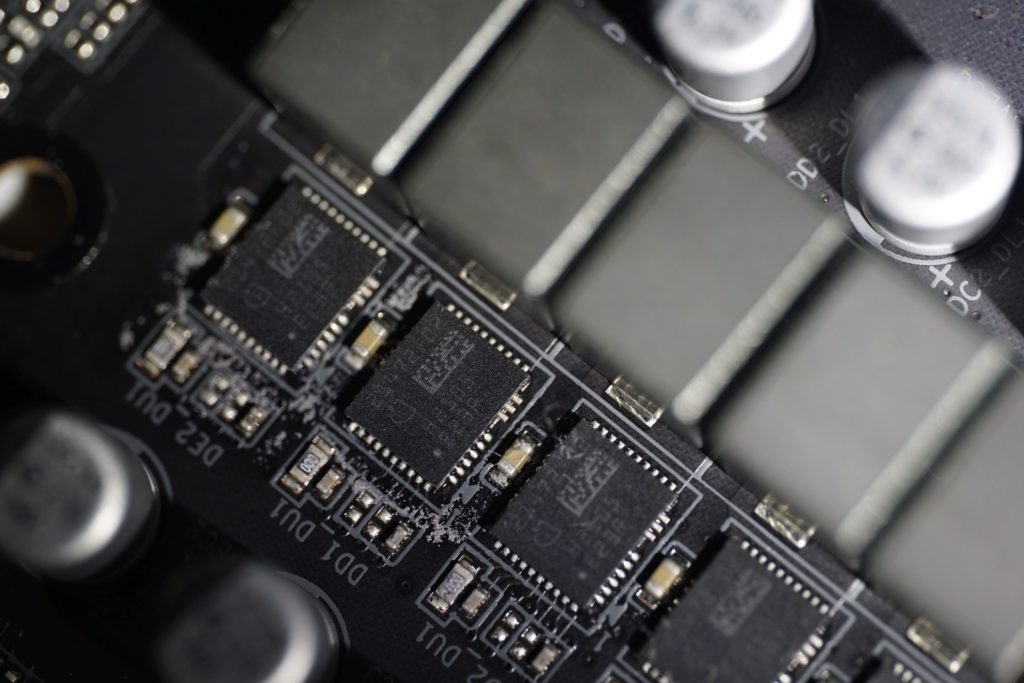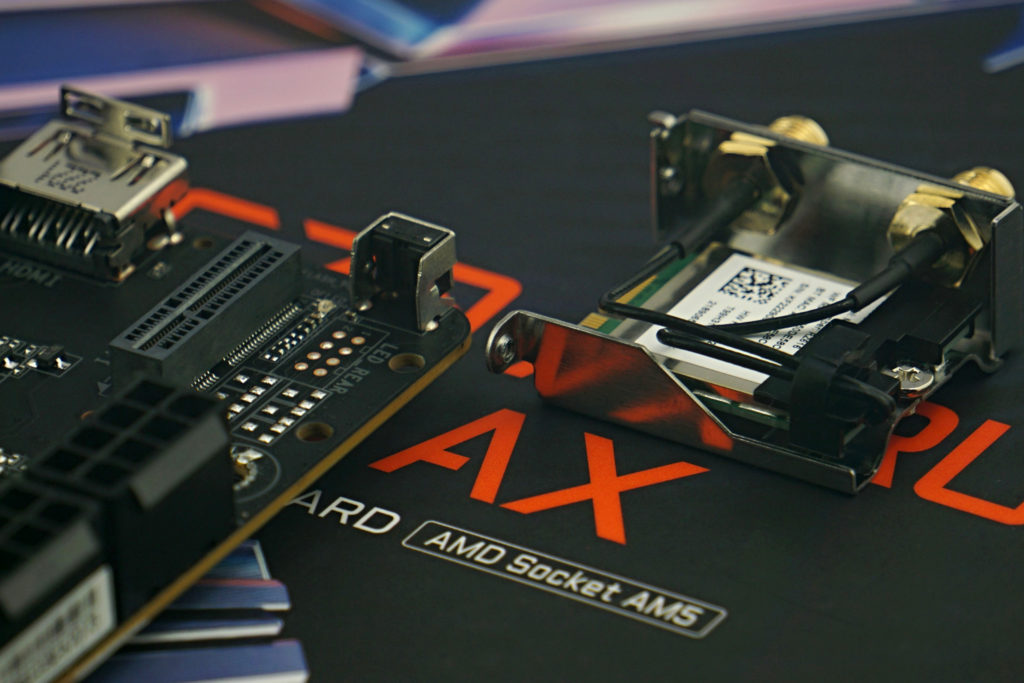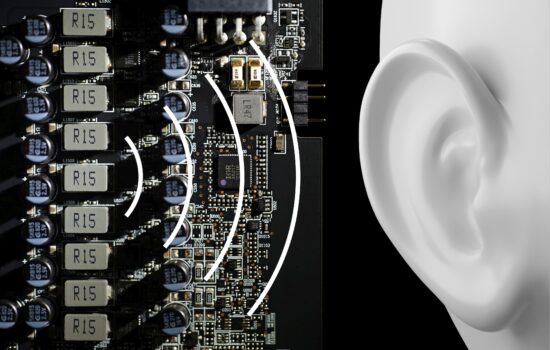Gigabyte Aorus X670 Elite AX in detail
Motherboards for the AMD AM5 platform with chipsets without “E” in the designation have weaker connectivity derived from the processor, but if you do not require PCIe 5.0 for the graphics card, you do not really need to worry. And not at all with the Aorus X670 Elite AX board, which defends the “Elite” label without the slightest difficulty. For proper features, but also for the fact that Gigabyte has once again pushed the performance more than usual.
Just like the last tested MSI MEG X670E Ace board, the Gigabyte Aorus X670 Elite AX, which we’ll take a look at now, is built on two Promontory chips (the ones the X670E and X670 boards have in common). The difference is that X670 boards do not support 16 PCIe 5.0 lanes for graphics card connections. This may stem from PCB design limitations, which on these boards may not be capable of such high speeds.
So X670 boards may be cheaper, but that still doesn’t make them second class. PCI Express 5.0 support is certainly a benefit, but it’s still a novel thing that current graphics cards don’t benefit from. Thus, some may consider it as a technology whose absence can be used to save a bit of money when buying a motherboard. Typically, users who don’t upgrade their build on an ongoing basis (those will miss PCIe 5.0 later on, after the release of the next generation of graphics cards), but will buy a whole new build when it comes down to it. This could make the Aorus X670 Elite AX make pretty good sense no matter what components they choose now.
| Parameters | Gigabyte X670 Aorus Elite AX | |
| Socket | AMD AM5 | |
| Chipset | AMD X670 | |
| Format | ATX (305 × 244 mm) | |
| CPU power delivery | 20-phase | |
| Supported memory (and max. frequency) | DDR5 (6666 MHz) | |
| Slots PCIe ×16 (+ PCIe ×1) | 3× (+ 0×) | |
| Centre of socket to first PCIe ×16 slot | 90 mm | |
| Centre of socket to first DIMM slot | 56 mm | |
| Storage connectors | 4× SATA III, 1× M.2 PCIe 5.0 (80–110 mm) + 3× PCIe 4.0 ×4 (80–110 mm) | |
| PWM connectors for fans or AIO pump | 5× | |
| Internal USB ports | 1× 3.2 gen. 2×2 type C, 4× 3.2 gen. 1 type A, 4× 2.0 type A | |
| Other internal connectors | 1× TPM, 3× ARGB LED (5 V), 2× RGB LED (12 V), 1× jumper Clear CMOS | |
| POST display | no (but has debug LED) | |
| Buttons | Power, reset, clear CMOS, Q-Flash | |
| External USB ports | 2× 3.2 gen. 2 type A, 6× 3.2 gen. 2 type A, 4× 2.0 type A | |
| Video outputs | 1× HDMI 2.1 | |
| Network | 1× RJ-45 (2,5 GbE) – Realtek RTL8125BG, WiFi 6E (802.11 a/b/g/n/ac/ax), Bluetooth 5.2 | |
| Audio | Realtek ALC897 (7.1) | |
| Other external connectors | – | |
| Suggested retail price | 340 EUR |
Gigabyte Aorus X670 Elite AX
Categorically, the Aorus X670 Elite AX is between the X670 Gaming AX (Gigabyte’s cheapest board with the X670 chipset) and the X670 Aorus Master (Gigabyte’s second most expensive X670 board). Within Gigabyte X670 motherboards, we can thus speak of a mid-range motherboard, although from an overall perspective (when we also take into account the B650 models) it is an above-average equipped motherboard. Towards the top is the last one, where you don’t pay extra for the illuminated cover between the rear I/O panel and the VRM heatsink.
The board format is ATX (305 × 244 mm). Of the PCI Express slots, three are fitted – all long, physically ×16. However, only the first one, connected to the processor, has the full number of contacts to connect 16 PCIe lanes. The latter is in the fifth generation (of this interface) only partially. It doesn’t support PCIe 5.0×16 for graphics cards, as mentioned above, but it can handle four lanes for SSDs (which the processor has reserved). At the time of writing this article, although no SSDs with PCIe 5.0 support are sold, this board counts on them in the future.
It is possible to install 80 and 110 mm SSDs in all M.2 positions. For the smaller ones, there are no mounting holes on the PCB for the spacers. These (the spacers) have a rather original mounting mechanism with a flip lock. This is used to secure the SSD instead of a screw. However, it is not a more elegant mechanism than the spring-loaded one Gigabyte uses on some other boards (including the Z790 Aorus Elite AX).
The disadvantage of this solution is that the top of these locks sticks to the heatsink thermal pads. And if you don’t hit the threads the first time you mount the heatsink, and a correction is needed (by shifting), you’ll probably pull the SSD out of the slot as well. Unintentionally, of course. Both the lock and the SSD get glued to the cooler and there you go… Although it may seem like a small thing, installing an SSD can be quite complicated. Especially when you’re trying to do it in cramped conditions (which the case always creates to some extent) with the motherboard typically in a vertical position.
On the contrary, the demounting of the graphics card is quite convenient. Gigabyte has made a kind of an extension to the latch of the first PCI Express ×16 slot – a lever that is more offset from the card, closer to hand. This will be especially appreciated by owners of wide, dual-tower CPU coolers.
The power delivery around the LGA 1718 (AM5) socket is robust, consisting of up to 20 phases. Of these, 16 are for Vcore to power the processor. This part is completely managed by Infineon components – 16 TDA21472 voltage regulators controlled by the XDPE192C3B chip. The maximum current load per phase according to the specifications is 70 A. In other words, everything is well oversized even for the Ryzen 9 7950X, which with a PPT of 230 W is the most powerful processor that can currently be used on the AMD AM5 platform.
There are up to 13 USB ports on the rear I/O panel, most of them faster (6×3.2 gen. 1), fast (2×3.2 gen.2) and one very fast (3.2 gen 2×2 type-C). Audio connectors are in a set of three as is the case on the Z790 Aorus Elite AX board, but here there is a line input instead of an optical output (S/PDIF). The audio adapter configuration is poorer overall. Not only is the audio codec here “only” Realtek ALC897, but you also have to do without a more powerful headphone amplifier and better capacitors (WIMA, which some Gigabyte boards with ALC897 have). The isolation from the rest of the board is good though, electromagnetic noise doesn’t interfere significantly with the sound.
Interestingly, the WiFi 6E module (with BT 5.2) is just behind the SMA connectors for external antennas, which was not always the case. On older boards it often used to be in the middle as well, and the antennas used to stretch around the board for a longer route, which naturally caused more interference than when this module is completely on the edge of the board. It connects via an M.2 (E-key) connector, vertically.
- Contents
- Gigabyte Aorus X670 Elite AX in detail
- What it looks like in BIOS
- Methodology: Performance tests
- Methodology: How we measure power draw
- Methodology: Temperature and frequency measurements
- Test setup
- 3DMark
- Borderlands 3
- F1 2020
- Metro Exodus
- Shadow of the Tomb Raider
- Total War Saga: Troy
- PCMark and Geekbench
- Web performance
- 3D rendering: Cinebench, Blender, ...
- Video 1/2: Adobe Premiere Pro
- Video 2/2: DaVinci Resolve Studio
- Graphics effects: Adobe After Effects
- Video encoding
- Audio encoding
- Photos: Adobe Photoshop, Affinity Photo, ...
- (De)compression
- (De)encryption
- Numerical computing
- Simulations
- Memory and cache tests
- M.2 (SSD) slots speed
- USB ports speed
- Ethernet speed
- Power draw without power limits
- Power draw with power limits
- Achieved CPU clock speed
- CPU temperature
- VRM temperature – thermal imaging of Vcore and SOC
- SSD temperature
- Chipset temperature (south bridge)
- Conclusion





